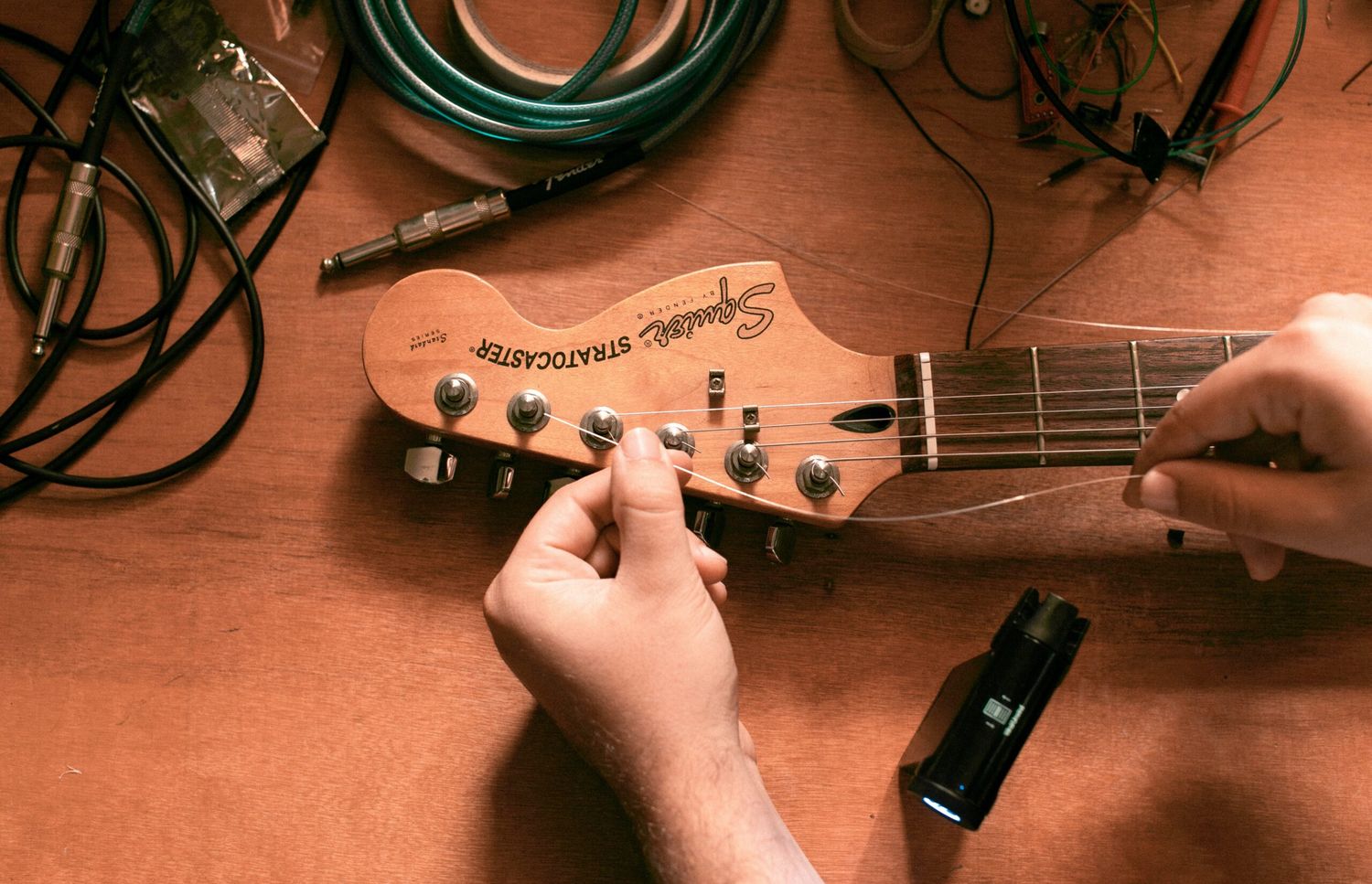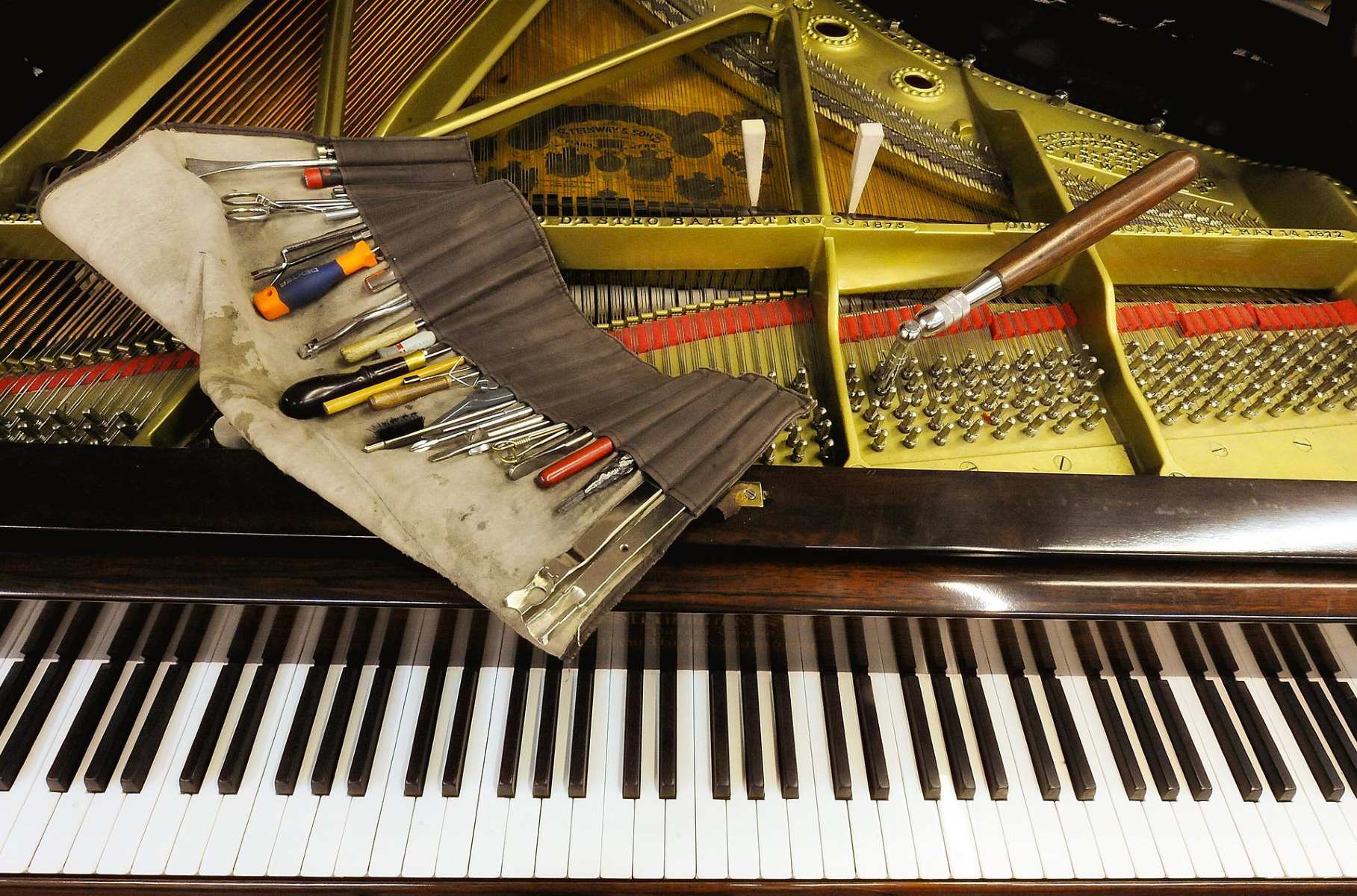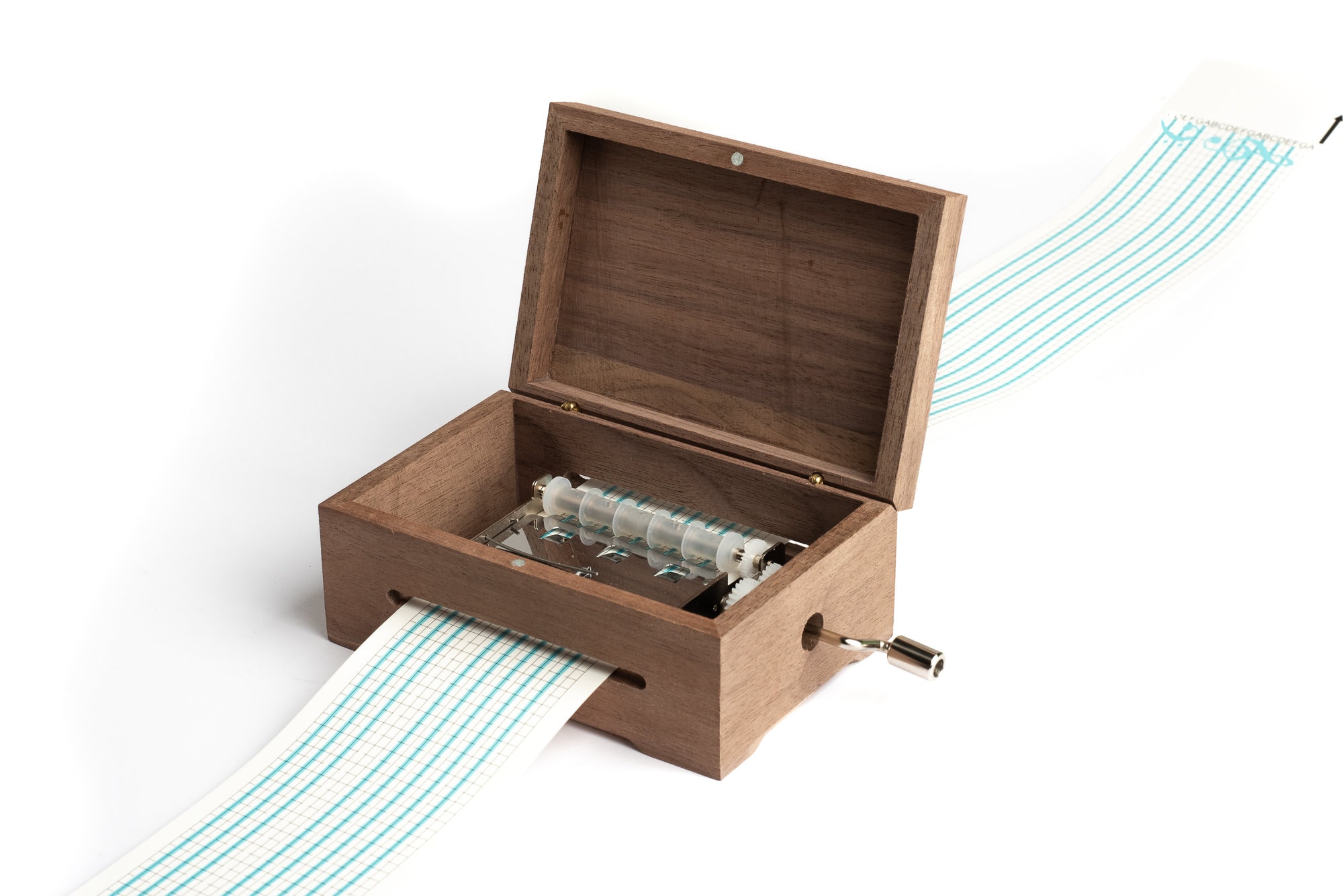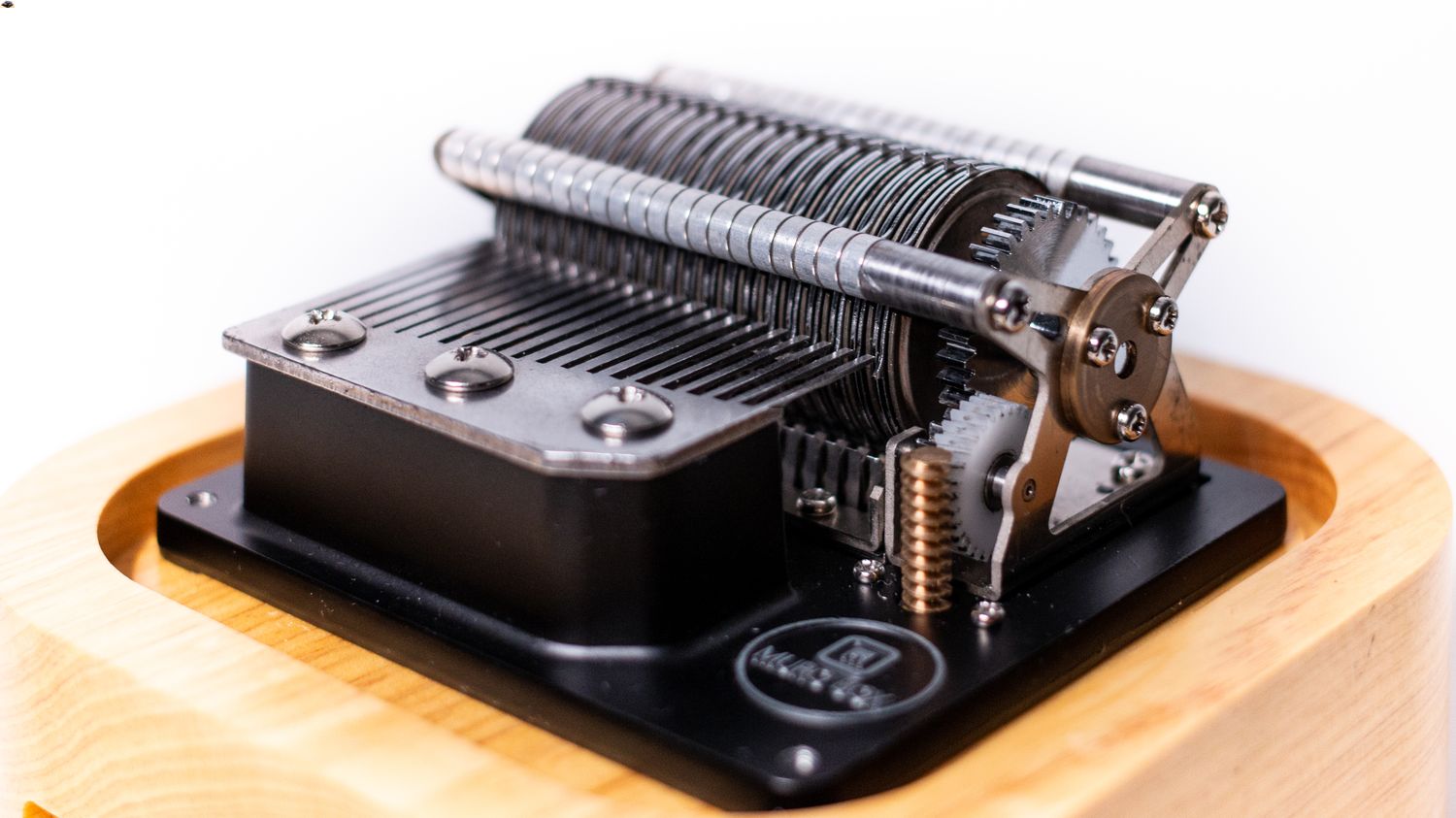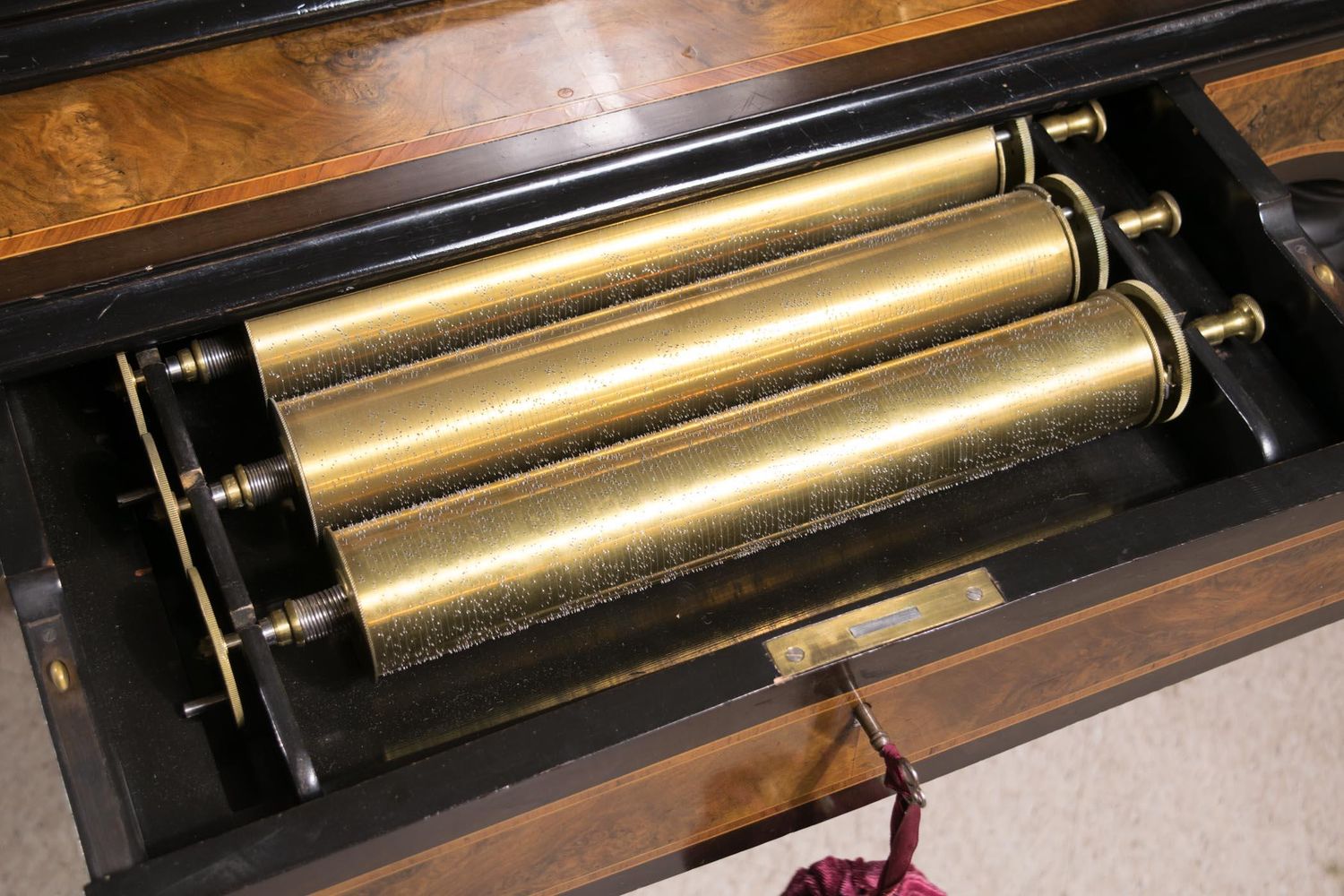Home>Devices & Equipment>Music Box>How To Identify Music Box Tune
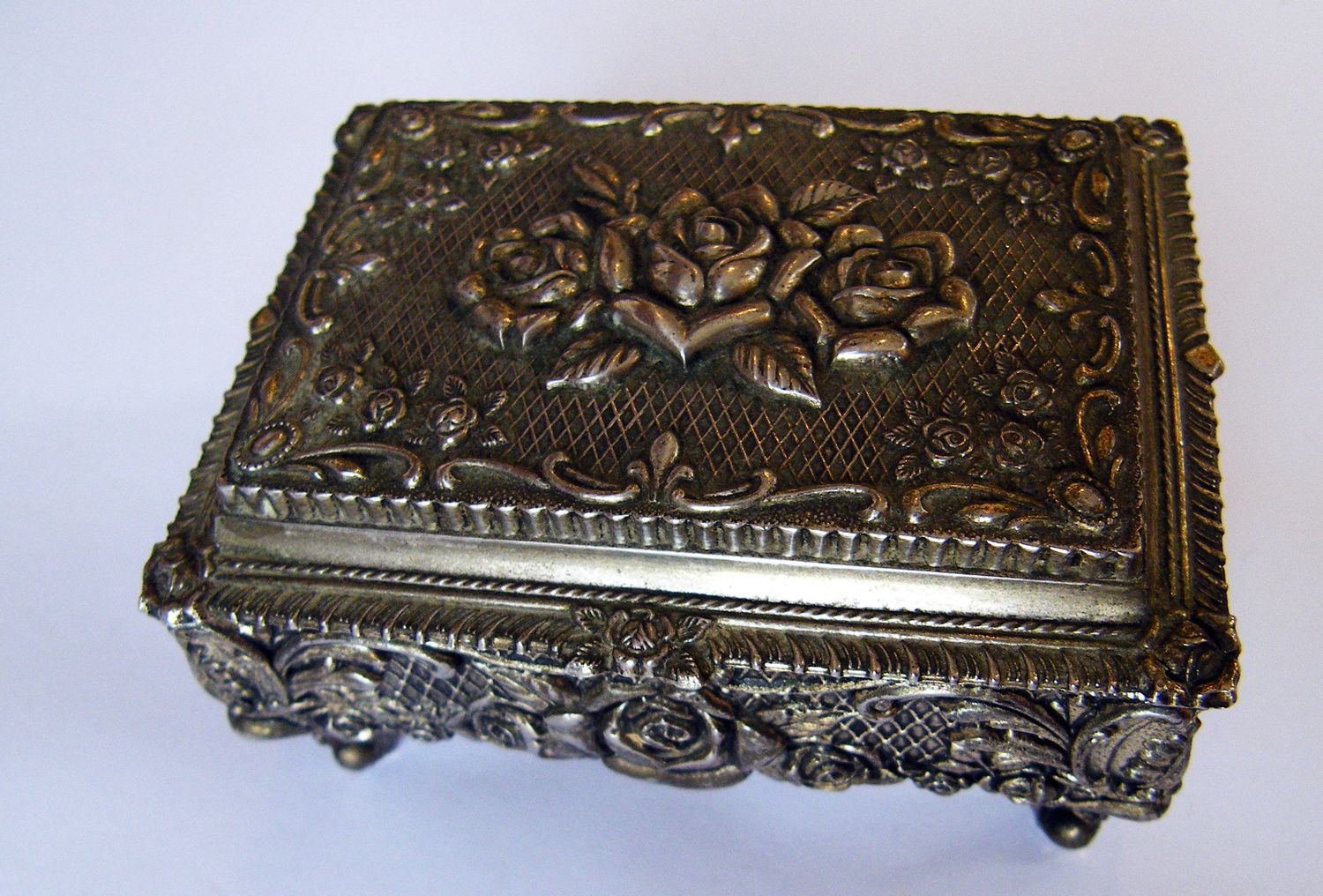

Music Box
How To Identify Music Box Tune
Modified: February 22, 2024
Learn how to identify the tune of a music box with our step-by-step guide. Discover the secrets of your favorite music box melodies.
(Many of the links in this article redirect to a specific reviewed product. Your purchase of these products through affiliate links helps to generate commission for AudioLover.com, at no extra cost. Learn more)
Table of Contents
Introduction
Music boxes have been enchanting people for centuries with their beautiful melodies and intricate mechanisms. As collectors and enthusiasts, we often come across a music box without knowing the tune it plays. Whether inherited, purchased, or stumbled upon, identifying the melody can be a fascinating quest.
In this article, we will guide you through the process of identifying the tune of a music box. From listening closely to utilizing technology, we’ll explore various methods that can help you unlock the mystery behind the melody.
Discovering the tune of a music box can be a rewarding experience, as it allows you to truly appreciate the craftsmanship and history behind the piece. Whether you want to showcase it in your home, share it with friends, or simply satisfy your curiosity, learning to identify the music box tune can add a whole new dimension to your enjoyment and understanding of these marvelous creations.
So, let’s embark on this journey together and unveil the secrets of the music box tune!
Step 1: Listen carefully
The first and most obvious step in identifying the tune of a music box is to listen to it carefully. Find a quiet space where you can concentrate and focus solely on the music. Pay close attention to the notes, rhythms, and overall melody.
Try to isolate the music box and eliminate any background noise that might interfere with your ability to hear the tune clearly. It can be helpful to hold the music box up to your ear or place it on a soft surface, like a pillow, to enhance the sound.
Listen to the music box multiple times, allowing yourself to become familiar with the melody. Take note of any recognizable musical phrases or unique characteristics that may assist you in identifying the tune.
If the music box plays a short tune, you may find it beneficial to record the melody using a smartphone or audio recording device. This way, you can replay and analyze the recording more easily without having to rely solely on your memory.
Remember, some music boxes have multiple tunes that can be selected. If this is the case, make sure to play each tune separately and concentrate on one at a time for accurate identification.
By actively listening and focusing on the music, you lay the foundation for the next steps in the identification process. So, take your time, immerse yourself in the sounds, and let your ears guide you towards unraveling the mystery of the music box tune.
Step 2: Research the melody
Once you have listened to the music box and familiarized yourself with the melody, the next step is to research the tune. Start by doing a broad search using keywords related to the characteristics of the tune, such as the tempo, mood, and any distinctive musical motifs.
Use search engines, music databases, and online forums to find information about similar melodies or songs that have a resemblance to the tune of your music box. Websites like MusicBoxManiacs.com or Discogs.com can be helpful resources in your search.
It can also be beneficial to reach out to music communities or forums dedicated to music box enthusiasts. These communities often have members with extensive knowledge and experience in identifying music box tunes. Be sure to provide any details you have gathered, such as the style of the music, any lyrics (if applicable), or any clues about the origin or age of the music box that might assist in the identification process.
In addition to online research, consider visiting local music shops or antique stores specializing in music boxes. The staff members or collectors there may have expertise in identifying melodies and can offer valuable insights or resources to help you find the tune.
Remember, identifying the melody of a music box can sometimes be a challenging task, especially if it is rare or unique. Don’t get discouraged if your initial research doesn’t yield immediate results. Keep persisting, expanding your search, and reaching out to others who share your passion for music boxes.
By conducting thorough research into the melody, you increase your chances of discovering the tune of your music box and opening the door to a world of musical knowledge and appreciation.
Step 3: Seek assistance from music experts
If your efforts in researching the melody have been unsuccessful thus far, it’s time to seek assistance from music experts. These individuals have a deeper understanding of music theory and can provide valuable insights and guidance in identifying the tune of your music box.
One option is to consult with a music teacher or professor who specializes in music history or theory. They can lend their expertise to analyze the melody, identify any musical patterns or styles, and potentially point you in the right direction towards discovering the tune.
Another avenue to explore is contacting professional musicians who have experience in a wide range of musical genres. They may be able to listen to the music box and offer their insights or recognize the tune based on their extensive knowledge of melodies and compositions.
If possible, consider attending music box conventions or exhibitions, where you can interact with collectors, restorers, and musical experts in person. These events often have experts who can listen to your music box and provide valuable information on the tune or suggest further avenues for research.
Additionally, you can reach out to music box manufacturers or restorers who may have encountered similar music boxes or melodies in their work. They may have resources or contacts that can assist in identifying the tune or even have access to historical records or catalogs that could provide valuable clues.
Remember, music experts can bring a wealth of knowledge and experience to the table and may uncover information that would have been challenging to find on your own. Don’t hesitate to seek their assistance to unravel the mystery behind the melody of your music box.
Step 4: Utilize technology and apps
In today’s digital age, technology can be a valuable tool in identifying the tune of a music box. There are several apps and online platforms specifically designed to help with music recognition and identification.
One popular option is to use a music recognition app such as Shazam or SoundHound. These apps use audio recognition technology to identify songs based on a short recording. Simply play the melody of your music box into the app, and it will analyze the sound and provide possible matches along with relevant information about the song.
Another option is to use online resources and databases such as Musipedia or Midomi. These platforms allow you to search for a song by humming or singing a part of the melody. While accuracy may vary, they can still provide useful suggestions and insights that can aid in your search.
If you have access to a computer and are comfortable using music production software, you can also try using a “pitch-to-MIDI” converter. These programs analyze the pitch and duration of the notes played and convert them into a MIDI file. Once you have the MIDI file, you can compare it to existing MIDI libraries to find similar tunes.
Additionally, consider joining online communities and forums dedicated to music box enthusiasts. These communities often have members who can provide recommendations on specific apps or share their experiences in successfully identifying music box tunes using technology. They may even have access to specialized tools or software specifically designed for music box recognition.
While technology can be a helpful resource, it’s important to keep in mind that not all apps or platforms are foolproof. Some tunes may be too rare or unique to be recognized by these tools. Therefore, it’s always helpful to combine the use of technology with other methods discussed in this article for a more comprehensive approach to identifying the tune.
So, embrace the power of technology and leverage the available apps and resources to help solve the mystery of your music box melody.
Step 5: Examine the music box mechanism
When all else fails in identifying the tune of a music box, a closer examination of the music box mechanism itself can provide valuable clues. Take a look inside the music box to understand its working parts and construction.
Start by removing the cover or the back panel of the music box to access the inner workings. Observe the mechanism carefully, paying attention to any visible inscriptions, numbers, or symbols engraved on the metal cylinders or discs.
Some music boxes have manufacturer’s markings or labels that can provide important information about the tune. Look for any imprinted names, logos, or serial numbers that can be used in further research. These markings may lead you to historical records or catalogs that can help identify the tune.
If the music box uses metal discs or cylinders with pins, check for any distinguishing patterns or arrangements. Different pins or hole positions correspond to different notes, and studying these patterns can offer insights into the melody being played. Compare the arrangement of pins to known music box tunes or consult with music box experts who can recognize specific patterns associated with particular melodies.
Additionally, examine the comb, the set of tuned metal teeth that produce the notes when struck by pins. The comb may have a unique configuration or design specific to certain tunes. Comparing the arrangement of the comb teeth to known music box tunes can help in identifying the melody.
Lastly, inspect other components of the music box, such as the governor, spring barrel, or any other parts that might have engraved information or markings. Any clues or identifying features can narrow down your search and lead you closer to identifying the tune.
Remember, analyzing the music box mechanism requires patience, attention to detail, and sometimes expert knowledge. If you’re not familiar with the inner workings of music boxes, consider consulting with a music box restorer or collector who can provide insights into the significance of the different components and their relation to specific tunes.
By examining the music box mechanism, you may uncover valuable information that can unlock the mystery behind the melody and bring you closer to identifying the tune of your music box.
Step 6: Compare with known tunes
One effective method to identify the tune of a music box is by comparing it with known melodies. This step involves listening to various tunes and matching them to the melody of your music box.
Start by creating a list of well-known songs or melodies that you believe might be similar to the tune of your music box. Include genres, time periods, or specific composers that align with the style and characteristics of the melody you are trying to identify.
Listen to each song on your list and pay close attention to the notes, rhythms, and overall structure. As you listen, compare these tunes with the melody of your music box. Take note of any similarities or recognizable musical phrases that align with your music box tune.
Keep in mind that the melody of the music box may have variations or adaptations, so be open to similarities rather than exact matches. Sometimes, the tune may be a simplified version or arrangement of a larger musical composition.
If you struggle to match the tune with any known melodies, consider consulting music resources, books, or online databases that provide a comprehensive collection of different musical compositions. They may have information about melodies commonly used in music boxes.
Additionally, sharing the melody with fellow music enthusiasts or collectors can be of great help. They may have encountered similar tunes in their own collections and can offer suggestions based on their experience and knowledge.
Remember to remain patient during this process and be open to exploring different possibilities. Sometimes, identifying the tune of a music box requires a bit of trial and error, but the satisfaction of finally discovering the melody will make the effort worthwhile.
By comparing the tune of your music box with known melodies, you increase your chances of finding a match and uncovering the identity of the enchanting melody that brings your music box to life.
Step 7: Consider any background information or history
When trying to identify the tune of a music box, it’s important to consider any background information or history associated with the music box itself. Sometimes, the story behind the music box can provide valuable clues that lead to the identification of the melody.
Start by examining the music box for any labels, markings, or tags that provide information about its origin, manufacturer, or previous owners. These details can help narrow down the possibilities and provide insights into the era or style of the music box.
Research the history of the music box, including its design, manufacturing period, and the cultural context in which it was created. Certain types of music boxes were popular during specific time periods, and understanding the historical context can shed light on the likely repertoire of tunes used in those music boxes.
If the music box has been passed down through generations in your family, talk to older relatives who may have knowledge about the origin or significance of the music box. They might remember the tune or have stories that can provide valuable hints for your identification efforts.
Consider any previous owners or collectors who may have left behind records or documentation about the music box. Auction catalogs, estate inventories, or personal diaries can offer clues about the music box’s original tune or any modifications made to it over time.
Furthermore, do some research on the manufacturer of the music box. Some manufacturers have distinct styles or signature tunes that they commonly used in their music boxes. Familiarize yourself with the repertoire of tunes associated with the manufacturer to see if any match the melody of your music box.
By exploring the background information and history of the music box, you may unveil crucial details that assist in the identification process. Understanding the context and story behind the music box can be both informative and fascinating, giving you a deeper appreciation for the musical treasure you have in your possession.
Conclusion
Identifying the tune of a music box can be an intriguing and rewarding journey. From listening carefully to researching melodies, seeking assistance from music experts, utilizing technology and apps, examining the music box mechanism, comparing with known tunes, and considering any background information or history, the process is filled with exploration and discovery.
While it may take time, patience, and a combination of different methods, the satisfaction of finally unraveling the mystery behind the melody is well worth the effort. Whether you uncover a beloved classical composition, a traditional folk tune, or a unique melody specific to your music box, each discovery adds another layer of appreciation to your music box collection.
Remember, throughout your exploration, document your findings, keep track of the resources and experts you consult, and embrace the wealth of knowledge shared by music enthusiasts and collectors. Engaging with the music box community can provide valuable insights, create connections, and enhance your overall understanding of these captivating musical treasures.
So, as you embark on the adventure of identifying the tune of your music box, open your ears, engage your curiosity, and embrace the joy of unraveling the enigmatic melody that emanates from this remarkable piece of craftsmanship. The world of music boxes awaits your discovery!


